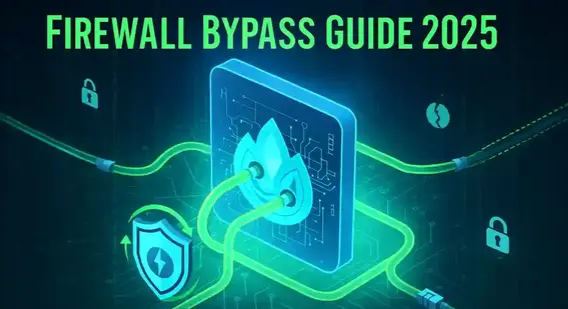How to Start Bug Bounty Hunting
Published on: September 13, 2025 |
Author: Bibek Singh
⚠️ Disclaimer: All content on CiphreX Labs is for educational and ethical purposes only. Do not use the tutorials, tools, or techniques on systems you do not own or lack explicit permission to test. The authors are not responsible for any misuse. Always practice ethical hacking.
So, you’ve heard the stories of ethical hackers finding critical security vulnerabilities in tech giants and earning massive cash rewards. While the reality is more methodical, the world of bug bounty programs is very real, incredibly rewarding, and desperately needed.
This guide is your comprehensive roadmap to becoming a successful bug bounty hunter. We'll cover everything from the absolute basics to advanced penetration testing techniques. Whether you're a cybersecurity student, a developer, or a complete beginner, you'll learn how to find web application vulnerabilities, write perfect vulnerability disclosure reports, and start earning on platforms like HackerOne and Bugcrowd.
What is a Bug Bounty Program? Understanding VDP vs. Bug Bounty
A bug bounty program is a crowdsourced cybersecurity initiative where companies invite security researchers and ethical hackers to find and report software bugs and security flaws in their applications. In return, they offer monetary rewards (bounties) or swag.
- Vulnerability Disclosure Program (VDP): A policy for receiving reports without offering financial rewards. It's for responsible disclosure only.
- Bug Bounty Program: Includes monetary incentives for qualifying security findings.
Both sides benefit: companies make their systems safer, and hackers get paid for finding problems legally and ethically.
The Mindset of a Successful Security Researcher
Before you use any hacking tools, you need the right mindset.
- Persistence is Key: You will face false positives and dry spells. The pros keep going.
- Curiosity and Creativity: Go beyond OWASP Top 10 checklists. Ask "what if?" Think about business logic flaws and application logic errors.
- Thorough Documentation: Your bug bounty report is everything. A clear proof of concept (PoC) is crucial.
- Continuous Learning: Follow infosec news, learn about new CVEs and attack vectors.
- Unshakable Ethics: Operate within the program's scope. Unauthorized testing is illegal. Trust is your currency.
Phase 1: Building Your Foundation (Core Skills for Beginners)
You can't find exploits without understanding the fundamentals.
- How The Web Works: Deeply understand HTTP/HTTPS, HTTP methods (GET, POST), headers, cookies, sessions, and the same-origin policy.
- Web Technologies: Get comfortable with HTML, CSS, JavaScript (including modern frameworks like React and Angular).
- Networking Basics: Know your TCP/IP, DNS, and subnetting.
- The OWASP Top 10: This is your bible. Understand each vulnerability:
- Injection (SQL Injection, Command Injection)
- Broken Authentication (bypassing login)
- Sensitive Data Exposure
- XML External Entities (XXE)
- Broken Access Control (IDOR - Insecure Direct Object Reference)
- Security Misconfigurations
- Cross-Site Scripting (XSS) (Reflected XSS, Stored XSS, DOM-based XSS)
- Insecure Deserialization
- Using Components with Known Vulnerabilities (e.g., outdated libraries)
- Insufficient Logging & Monitoring
Phase 2: Gearing Up – The Essential Bug Bounty Toolkit
A hunter needs the right tools. Here’s your pentesting toolkit:
- Browser & Proxy: Burp Suite Professional is the industry standard. The Community Edition is free. OWASP ZAP is a great free alternative.
- Reconnaissance (Recon): The most critical phase for finding attack surfaces.
- Subdomain Enumeration: Tools like Amass, Subfinder, Sublist3r.
- Port Scanning: Nmap, Zenmap
- Content Discovery: Gobuster, Dirb, FFUF to find hidden directories and files.
- Endpoint Discovery: Gau (GetAllURLs), Waybackurls to find historical URLs.
- Vulnerability Scanners: Nuclei (uses community-powered templates) and the Burp Scanner. Never rely solely on automated tools.
- Browser Extensions: Hack-Tools, Wappalyzer (for technology stack identification), Retire.js (for detecting vulnerable JS libraries).
Phase 3: The Hunting Methodology – A Step-by-Step Process
Step 1: Target Selection on Bug Bounty Platforms
Choose a program on HackerOne, Bugcrowd, or Immunefi (for blockchain security and crypto bug bounties). Start with a smaller, less competitive program.
Step 2: Reconnaissance - Finding Your Attack Surface
Information gathering is everything.
- Passive Recon: Find all subdomains (api., dev., test.).
- Content Discovery: Find hidden endpoints like /admin, /backup, /api/v1.
- Endpoint Discovery: Use Gau and Waybackurls to find old, forgotten, and often vulnerable parameters.
- Technology Stack: Use Wappalyzer to identify tech. This dictates your attacks (e.g., find Laravel? Check for specific CVEs).
Step 3: Vulnerability Identification & Exploitation
Manually test the application like an attacker.
1. Map the Application: Browse every feature. Note all input points: forms, URL parameters, HTTP headers, file uploads.
2. Test for Common Vulns:
- For every input, test for XSS: alert(xss).
- For every parameter, test for SQLi: ', ", 1' OR '1'='1.
- Test for IDOR: Change an ID in a request (e.g., user_id=1234 to user_id=1235).
- Test for SSRF: In features that fetch URLs, try to access internal endpoints (http://localhost, AWS metadata endpoints).
- Test for Broken Access Control: Can a user access an /admin panel?
3. Hunt for Logic Flaws: The holy grail. Example: Add a negative quantity to a cart to get a negative total, applying a discount.
Step 4: Proof of Concept (PoC) Development
- For SQLi, show a database dump.
- For XSS, show a cookie being stolen.
- For IDOR, provide screenshots of unauthorized data access.
- A video is often the best PoC.
Phase 4: The Art of the Report – How to Get Paid
A bad report can get a valid bug closed as NA or duplicate. Your vulnerability disclosure report MUST include:
- Clear Title: "Stored XSS on [target] via unsanitized 'profile bio' parameter"
- Summary: Brief description of the bug and its risk assessment.
- Steps to Reproduce: A numbered, step-by-step list. Make it idiot-proof.
- Proof of Concept (PoC): Screenshots, video, or curl commands.
- Impact: Explain the risk. "This allows session hijacking, account takeover, or defacement."
- Remediation: Suggest a fix. "Implement input validation and output encoding."
Beyond the Basics: Pro Tips for Earning More
- Automate Your Recon: Learn Bash or Python scripting to chain your tools together.
- Read Public Reports: On HackerOne, read disclosed reports to see what others found.
- Specialize: Become an expert in one niche like API security, SSRF, or GraphQL vulnerabilities.
- Network: Join the infosec community on Twitter, Discord (The Bug Bounty Hunter's Discord), and Reddit (r/bugbounty).
The Reality Check: Is Bug Bounty Hunting Worth It?
- It's a Marathon: Don’t expect instant success. Consistency beats brute force.
- You Will Face Rejection: Duplicates are common. Learn from them.
- Manage Your Time: Avoid burnout. Set a schedule.
Frequently Asked Questions (FAQ)
Q1: How much money can you really make from bug bounties?
A1: Earnings are highly variable. Beginners might earn a few hundred dollars for their first low-severity finds. Top-tier hunters can earn a full-time income, with some reporting six-figure annual earnings from critical vulnerabilities in large programs. It's a ladder, not a lottery.
Q2: Do I need a degree in cybersecurity to start?
A2: No. While a formal education helps, most successful hunters are self-taught. A deep curiosity, hands-on practice in labs, and consistent learning from resources like PortSwigger Academy are far more important than a degree.
Q3: Is bug hunting legal?
A3: Yes, but only if you do it right. You must only test targets that have a public bounty program or have given you explicit written permission. Testing systems without authorization is illegal and considered hacking. Always read and follow each program's rules of engagement.
Q4: How do I avoid duplicates?
A4: You can't avoid them entirely, but you can minimize them. Target newer programs or less popular assets within large programs. After recon, test quickly. The sooner you report after a new feature launch, the less chance someone else has found it.
Q5: What's the best bug bounty platform for beginners?
A5: HackerOne and Bugcrowd are the largest and have the most programs. They also have great educational resources. Start by looking for programs tagged as "good for beginners" or that have a large number of targets, increasing your attack surface.
Q6: How much time does it take to find my first bug?
A6: It depends on your existing skill level and time invested. For a complete beginner studying fundamentals and practicing for a few hours daily, it could take 3-6 months to find a first valid bug. Persistence is key.
Conclusion: Start Your Ethical Hacking Journey Now
Bug bounty hunting is a challenging but fulfilling path in information security. It sharpens your skills, contributes to a safer internet, and can build a lucrative career in cybersecurity.
The best hunter is the most curious and persistent one. Your journey starts now. Get out there and start hunting!
Happy (and legal) Hacking!

Discover how hackers, apps, and websites track your exact location through your IP, GPS, and photos.…

Learn how to bypass firewalls for security testing. Step-by-step guide with Nmap, SSH tunneling, DNS…

Discover Cursor AI – the ultimate AI-powered code editor built on VS Code. Generate, debug, and opti…

